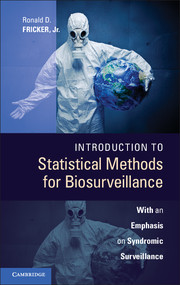Preface
Published online by Cambridge University Press: 05 March 2013
Summary
This book is about basic statistical methods useful for biosurveillance. The focus on basic methods has a twofold motivation. First, there is a need for a text that starts from the fundamentals, both of public health surveillance and statistics, and weaves them together into a foundation for biosurveillance. Only from a solid foundation can an enduring edifice be built.
Second, while there is a large and growing literature about biosurveillance that includes the application of some very complicated and sophisticated statistical methods, it has been my experience that more complicated methods and models do not always result in better performance. And even when they do, there is often an inherent trade-off made in terms of transparency and interpretability.
Indeed, a real challenge in today's data-rich environment is deciding when enough complication is enough. More is not always better, whether we're talking about eating dessert or building a model or developing a detection algorithm. There is a rich history that speaks to this point:
Occam's razor: “All other things being equal, a simpler explanation is better than a more complex one.”
- Type
- Chapter
- Information
- Introduction to Statistical Methods for BiosurveillanceWith an Emphasis on Syndromic Surveillance, pp. xi - xivPublisher: Cambridge University PressPrint publication year: 2013



